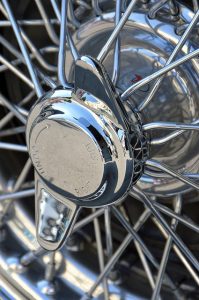
Also known as chromium plating, chrome plating is a finishing process that involves the application of chromium onto the surface of a metal workpiece or object. From wheels to doorknobs and cutlery and vases, it’s used for in a variety of manufacturing applications
The Basics of Chrome Plating
How does chrome plating work exactly? It’s essentially an electroplating technique that, like other electroplating techniques, requires an electrical charge. To apply a layer of chromium onto a workpiece or object, a manufacturing company must apply an electrical charge to a tub or container filled with chromium anhydride. The electrical charge triggers a chemical reaction in which the chromium deposits itself onto the surface of the workpiece or object.
The Steps of Chrome Plating
Chrome plating begins by cleaning and degreasing the metal workpiece or object. Once the workpiece or object has been thoroughly cleaned so that there’s no lingering debris, it’s placed inside a container filled with chromium anhydride. Next, an electrical charge is applied to the container, thereby triggering a chemical reaction that causes the chromium to stick to the workpiece or object.
Of course, that’s just the basic steps of chrome plating. Some manufacturing companies may perform other steps, such as finishing and buffing. Regardless, though, all chrome plating processes are characterized by the use of an electrically charged chromium solution. The electrical charge causes the chromium to deposit itself onto the workpiece’s or object’s surface, resulting in the formation of an outer layer of chromium.
Decorative vs Hard Chrome Plating: What’s the Difference?
Chrome plating is often categorized as either decorating or hard, depending on the thickness of the chromium layer it’s used to create. Decorative chrome plating typically ranged from just 0.05 to 0.5 micrometers thick. It’s used on workpieces and objects made of a variety of materials, some of which include aluminum, low-carbon steel, high-carbon steel, plastic, copper and various alloys.
Hard chrome plating, one the other hand, is substantially thicker than its decorative counterpart. Also known as industrial chrome plating, it’s typically preferred because of its increased strength and durability. With greater thickness, hard chrome plating allows for the production of a strong and durable outer layer that’s naturally protected against degradation.
To recap, chrome plating is an electroplating technique that’s characterized by the use of chromium. It uses electricity to deposit chromium onto the surface of a workpiece or object. The newly formed chrome layer works to protect the underlying workpiece or object from corrosion while improving its aesthetics in the process.
